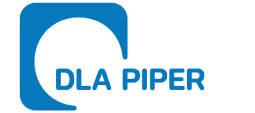The electronization of healthcare (eHealth) streamlines processes in healthcare and improves the quality and availability of medical care. Some elements of eHealth already existed in Czech law, but the legislation was fragmented. To set the general framework, basic rules, and standards for the functioning of eHealth, a new Act No 325/2021 Coll., on electronization of healthcare (Act) was adopted, with effect from January 1, 2022.
Existing Elements of eHealth
Czech law already recognizes the ePrescription system regulated by the Medicines Act (Act No. 378/2007 Coll.). The ePrescription system is a central repository of electronic prescriptions and, with effect from January 1, 2022, also a central repository of vaccination records. The ePrescription system allows authorized people to consult patients’ medication records, which contain data on prescribed and dispensed medicines, and allows them to view data on vaccinations administered to a particular patient. Another electronic tool in the field of sickness insurance is the eSick leave card, an electronic sickness absence report issued by a doctor. Also anchored in legislation is the patient summary, regulated in the Health Services Act (Act No. 372/2011 Coll.). This is an electronic set of patient data, which is intended primarily for the purpose of sharing information with health service providers in another EU country through the National Contact Point for eHealth.
New Legislation
The Act introduces a comprehensive legal framework for the basic infrastructure of electronic healthcare and defines the roles and responsibilities of entities in the electronic healthcare system. The new legislation has a split effect. The first part of the Act came into force on January 1, 2022, and other parts will come into force in 2023 and 2024. The full Act should then come into force on January 1, 2026.
The Act is the first phase of the electronization of healthcare. It sets forth the concept of eHealth, which includes a central infrastructure, known as the integrated data interface. Building an integrated data interface is intended to ensure uniform access to eHealth services and provides the basis for sharing information between healthcare service providers, patients, and insurers. Patients will be able to find out what information is held on them in registers via the eHealth portal.
The integrated data interface will include core registers – a patient register, a provider register, and a health worker register. The Act also introduces and defines a patient identifier to replace birth numbers (personal identification numbers) and healthcare worker identifiers used in the healthcare system as unique identifiers of people in the electronic healthcare system. The main part of the law establishing the integrated data interface and personal identifiers will come into force on January 1, 2023.
The law also defines eHealth standards, the issuance of which is entrusted to the Ministry of Health. The obligation to comply with them will apply from January 1, 2026.
Obligations of Healthcare Services Providers
From January 1, 2023, providers of healthcare services will be required to record data in the scope provided for by the Act in core registers, which will be established by the Ministry of Health on the same date. Healthcare services providers will be required to ensure a gradual transition from the birth number to the newly introduced identifiers and to use and follow data from the core registries effective January 1, 2024.
What to expect in the future?
The Act prepares the background for the electronization of processes in healthcare with a view to making the electronic route the primary one and replacing paper-based systems. The existing processes in the healthcare system are not changed by the Act – the actual anchoring of the maintenance of medical records in electronic form is left in the existing regulation, especially in the Health Services Act.
The next phase of the electronization of healthcare should be the introduction of a health documentation index, as an information system describing the basic typology of existing health documentation and bringing together metadata about the documentation.
By Petr Samec, Co-Head of Life Sciences, and David Hron, Junior Associate, DLA Piper
This article was originally published in Issue 9.11 of the CEE Legal Matters Magazine. If you would like to receive a hard copy of the magazine, you can subscribe here.


